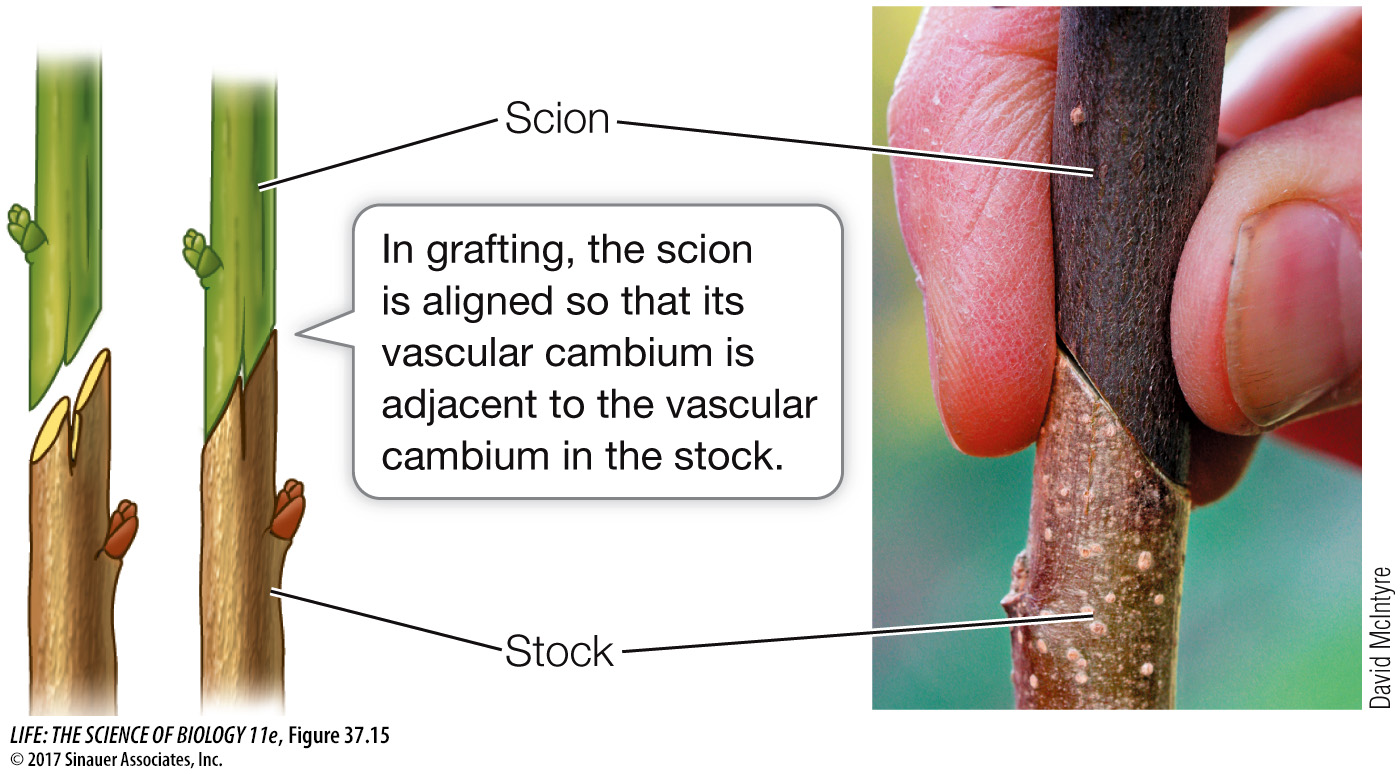Vegetative reproduction is important in agriculture
One of the oldest methods of vegetative reproduction used in agriculture consists of simply making cuttings of stems, inserting them in soil, and waiting for them to form roots and become autonomous plants. The cuttings are usually encouraged to root by treatment with auxin, a plant hormone.
Woody plants can be propagated asexually by grafting: attaching a bud or a piece of stem from one plant to a root or root-bearing stem of another plant. The part of the resulting plant that comes from the root-bearing “host” is called the stock; the part grafted on is the scion (Figure 37.15). The vascular cambium of the scion associates with that of the stock, forming a continuous cambium that produces xylem and phloem. The cambium allows the transport of water and minerals to the scion and of photosynthate to the stock. Much of the fruit grown for market in the United States is produced on grafted trees, as are wine grapes.

Figure 37.15 Grafting Grafting—attaching a piece of a plant to the root or root-bearing stem of another plant—is a common horticultural technique. The “host” root or stem is the stock; the upper grafted piece is the scion. In the photo, a scion of one apple variety is being grafted onto a stock of another variety.
Another method widely used for asexual plant propagation is meristem culture, in which pieces of shoot apical meristem are cultured on growth media to generate plantlets, which can then be planted in the field. This strategy is vital when uniformity is desired, as in forestry, or when virus-free plants are the goal, as with strawberries and potatoes.
